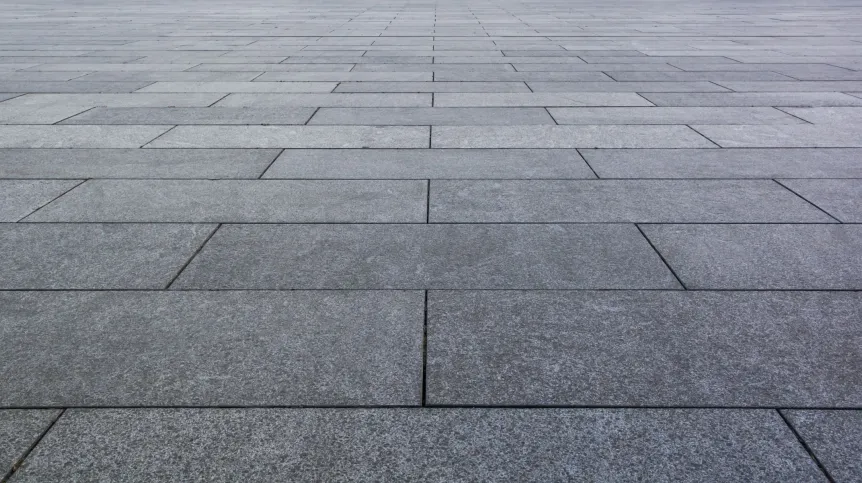
A city covered with concrete is convenient for the authorities, easier to clean and cheaper to maintain. But such conditions are 'inhuman', believes the director of the Institute for Ecology of Industrial Areas (IETU), Dr. Marta Pogrzeba.
The concept of 'concretosis' as a city surface tightly covered with concrete has entered the scientific and political discourse; it is used in the programs of the Ministry of Climate and Environment.
According to the natural scientist, the cause of 'concretosis' is the lack of control over the space given to developers. In most voivodship capital cities, the buildings are so densely built that no thought is given to unsealing the earth's surface. During spatial planning, it is cheaper to make paths and access roads, pavements and parking lots at once. But it doesn't make the space any more aesthetic. Taking into account the urban heat islands resulting from concrete cover, it is simply 'inhuman'.
WHO BENEFITS FROM CONCRETE COVER
According to Dr. Pogrzeba ‘Concretosis' affects even historic old town squares and there is no turning back in sight from the trend and historic spaces are now significantly different from the green places photographed in the 1960s.
She said: “A city covered with concrete is convenient for the authorities. Cleaning up after big events, mass events organized on paved squares is easier than cleaning lawns or green areas. Greenery maintenance comes at a cost. Some cities have abandoned the idea of maintaining urban greenery on their own. They usually use the services of private companies.”
She admitted that 'for aesthetics', when planning housing estates, developers take into account greenery, squares and even micro-parks, also called pocket parks. But it is generally cheaper to pave larger surfaces or cover them with concrete. Even playgrounds are covered with concrete, although they should have surfaces that are more friendly not only to children, but also to the environment.
HOW TO UNSEAL A CITY
Pogrzeba said: “In Poland, we use maybe 10 percent of rainwater - and only in those cities where there is no 'concretosis'. In the cities covered with concrete, during torrential rains, most of this water flows into drains and we lose it irretrievably. Yes, this prevents incidental flooding after torrential rains, but water is basically lost to the city.”
In order to manage rainfall, she argues, urban space must be unsealed - with small city squares, rain gardens or artificial rivers, i.e. depressions filled with stones, which serve as reservoirs of water after a heavy rain. Openwork pavement instead of concrete is also a solution.
She said: “It is enough to put openwork pavement stones on the road and sow grass between them. Vegetation overgrows the openwork stones, looks aesthetically pleasing, and during torrential rains, water is able to infiltrate deep into the ground.”
In example she pointed to an alley in Chorzów, with trees planted on the sides, where concrete was replaced with openwork pavement stones - since then, residents have no problem with water flowing on the road during a downpour.
Researchers and concrete manufacturers have also developed other permeable pavements, building materials based on waste and at the same time water-permeable - it is only up to city authorities to choose the type of concrete.
The expert recalls studies according to which removal of even 10 percent of concrete leads to 20 percent higher water retention in the soil. There are technological solutions that allow the surface to be unsealed.
GREEN ACUPUNCTURE
Dr. Pogrzeba continued: “The problems with covered concrete are urban heat islands, where near the asphalt summer temperatures reach 70 degrees Celsius. Each green patch reduces this inhuman' temperature.
“Green injections that heal the city tissue are microspheres - parks, green bus stops, flowerbeds, where we introduce vegetation from nature. We no longer plant geraniums or begonias, which are annual plants and therefore costly. We are introducing plants from xerothermic grasslands that can cope with our climatic conditions, because they are resistant to changes, high temperatures and lack of water.”
Together with the research team from IETU, she offers original technologies to cities - for example, a self-sufficient smart module for the city's green infrastructure. The module based on a sea container, the prototype of which will be installed in Katowice, allows to design greenery coming from nature in those parts of cities where we have 'concretosis', and due to critical infrastructure it is impossible to, for example, plant trees.
In the module, the green roof and wall are planted with plants from xerothermic grasslands; the roof equipped with photovoltaic panels and an installation collecting rainwater in an underground tank allows for seamless maintenance of vegetation. Humidity sensors on the 'carpet' of plants give a signal to the water pump to water the plants in conditions of thermal stress. The operation of the entire module can be monitored from a smartphone. Inside the container, the city can set up, for example, a book exchange, a tourist information point or a public toilet.
In Katowice, green city stops are being installed along expressways, where people currently have nowhere to hide from the sun during the summer. These stops will also be equipped with humidity sensors and irrigation systems.
THE CONCRETE IS SPILLING OUT FROM THE CITIES
'Concretosis' is also a problem in rural areas, says Dr. Pogrzeba. On large farms with grain silos and on cattle farms, concreting is a common practice, as such large areas are then easy to keep clean and well connected. Here, again, the solution to the problem may be semi-permeable surfaces, especially openwork paving stones, on which tractors can drive.
'Small urban centres were once surrounded by farmland where food could be grown. Such food products had a short path to the consumer. Now, most of the countryside around cities has been used for housing development. The average resident who has moved out of the city and built his place to live in the countryside, at the same time has concreted 40 percent of his plot, Dr. Pogrzeba said. (PAP)
PAP - Science in Poland, Karolina Duszczyk
kol/ bar/ kap/
tr. RL













